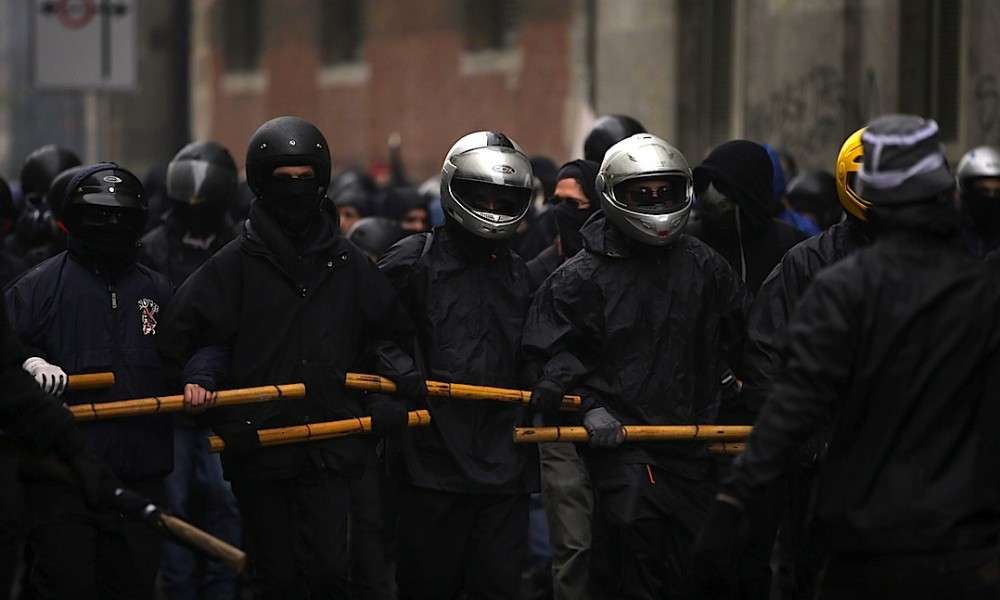Though the revolutionary potential of the Italian Autonomia in the 1970s died down, their vibrance, confidence and empowerment was an inspiration to young people in West Germany in the 1980s. Inspired also by the Amsterdam squatters’ movements and youth organization in Switzerland, young Germans in Berlin, Hamburg and other major cities began building their own autonomous culture and social groups based upon radical resistance and alternative ways of life.
The direction and composition of radical organization in West Germany in the 1980s was partly determined by the reigning economic recession and the forms it took. Because of the well established connections between industrial unions and the German government, the effects of this recession were felt not so much by blue collar workers, but by young people who found it increasingly impossible to secure jobs and housing and thereby move out of their parents’ home and become socially and financially independent. Therefore points for autonomous youth mobilization included the stifling conformity of rural German society and the nuclear family, serious housing shortages, high unemployment–as well as the continued illegal status of abortion and government plans for a massive expansion of nuclear power.
As a result of economic recession and flight to the suburbs, at the end of the 1970s huge tracts of buildings in different German inner cities, especially West Berlin, lay abandoned by developers or government agencies. Squatting these buildings was a viable option for impoverished young people looking for independence from the nuclear family home. Vibrant squatters’ communities grew up in the Kreuzberg neighborhood of Berlin, the Haffenstrasse squats of Hamburg and in other concentration points. The cornerstone of these communities was communal living, and the creation of radical social centers: infoshops, bookstores, coffeehouses, meeting halls, bars, concert halls, art galleries, and other multi-use spaces where grassroots political, artistic and social culture were developed as an alternative to nuclear family life, TV dreams and mass-produced pop culture.
From these safe social spaces grew major grassroots initiatives to fight nuclear power; to break down patriarchy and gender roles; to show solidarity with oppressed people throughout the world by attacking the European-based multinational corporations or financial institutions like the World Bank; and after German reunification, to fight the rising tide of conservative neo-Nazism. Similar initiatives for alternative living as resistance were percolating in the 1980s (and in some places much earlier) in Holland, Denmark and elsewhere throughout northern Europe. Eventually all of these northern Europeans living in decentralized social groups dedicated to creating a non-coercive, non-hierarchical society became collectively labeled as “Autonomen.” Over time the autonomists’ ideas and tactics also migrated throughout the reunited post-Iron Curtain Europe. I personally have visited radical autonomous social centers in England, Spain, Italy, Croatia, Slovenia, and the Czech Republic.
via ainfos.ca
Part A Hardline Oppression, Militant Resistance, And the Origins of the BLACK BLOCK
Part B Autonomen BLACK BLOCK Accomplishments
Part C Pre-Seattle Black Blocks in the U.S.A.
Part D Autonomia and the Origin of the Black Block
Part E About Autonomy

